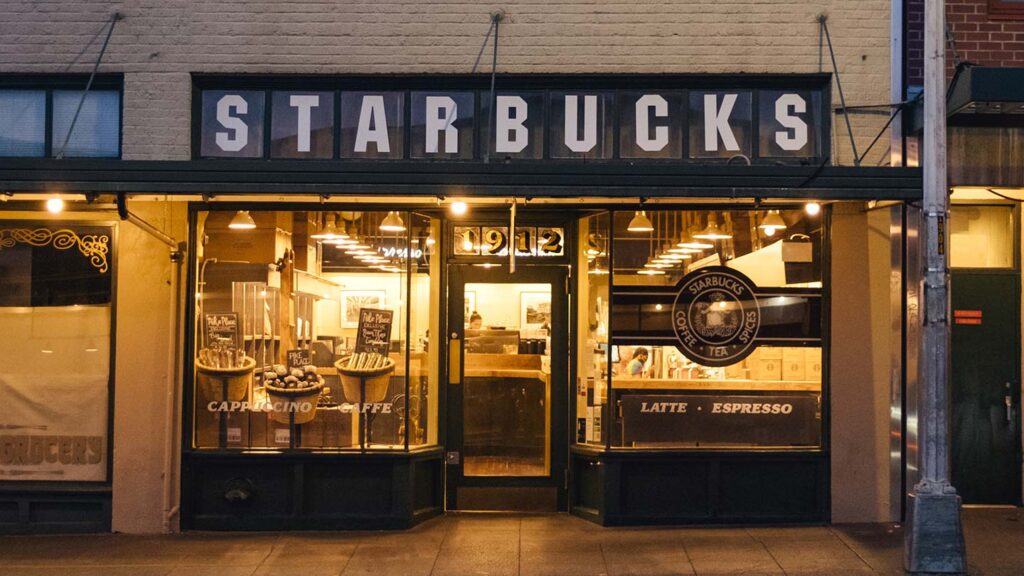Embracing Multi-Brand Strategy for Future Growth

In today’s rapidly evolving market landscape, businesses are continually challenged to identify and implement effective growth strategies that can propel them ahead of the competition. Growth strategies can vary widely depending on the industry, market conditions, and company goals. Common approaches include market penetration, market development, product expansion, and diversification. Each strategy offers unique advantages and challenges, and choosing the right one can significantly impact a company’s success.
This blog post explores a specific growth strategy for Starbucks, focusing on the potential of a multi-brand strategy to enhance its market presence and meet diverse consumer needs. As we delve into this approach, we will consider its implications, benefits, and risks in the context of Starbucks’ ongoing quest for innovation and market expansion.

Image Source: https://www.starbucks.com/about-us/
Considerations of Potential Growth Strategies
Starbucks, a global leader in the coffee industry, continuously seeks innovative strategies to maintain its market dominance and expand its customer base. A multi-brand strategy that involves creating new, distinct coffee shop brands tailored to different market segments could capture a broader spectrum of consumers while maintaining Starbucks’ identity and operational strengths.
However, a new growth strategy for Starbucks must:
- Leverage its vast operational experience and brand equity.
- Address diverse consumer preferences and expectations that may not be fully met by the Starbucks brand alone.
- Capitalize on emerging market trends and consumer demands in the coffee industry, such as specialty coffees, local flavors, and sustainable practices.
A multi-brand strategy could enable Starbucks to target various consumer segments more effectively, from budget-conscious customers to luxury coffee aficionados, without diluting the core Starbucks brand.

Image Source: https://stories.starbucks.com/press/press-releases/
Risks and Benefits of a Multi Brand Strategy
Risks:
- Brand Overextension: Managing multiple brands can spread resources thin and complicate the brand architecture, potentially diluting the strong Starbucks brand identity.
- Market Cannibalization: New brands could compete with existing Starbucks brands and outlets, potentially splitting the customer base rather than expanding it.
- Operational Complexity: Multiple brands increase the complexity of operations, requiring differentiated marketing strategies, product development, and customer service approaches.
Benefits:
- Market Segmentation: By creating targeted brands, Starbucks can cater to niche markets more effectively. For instance, one brand could focus on high-end, exotic coffees, while another might emphasize cost efficiency and convenience.
- Increased Market Penetration: This strategy allows Starbucks to enter new geographic and demographic markets that may perceive the main Starbucks brand in a particular light that doesn’t align with their preferences.
- Innovation and Growth: Multiple brands encourage innovation and reduce risk by allowing Starbucks to experiment with new concepts and ideas in a controlled manner, which can lead to significant growth in different market segments.
Future Benefits and Vision of the New Strategy
The vision behind adopting a multi-brand strategy is to transform Starbucks into a more diversified corporation with a portfolio of brands that cater to all segments of the coffee market. This expansion aims to achieve several long-term benefits:
- Sustained Growth: Multiple brands can drive overall corporate growth by reaching more customers and creating new revenue streams.
- Enhanced Customer Loyalty: With more brands under its umbrella, Starbucks can offer personalized experiences, enhancing customer loyalty across different demographics.
- Leadership in Innovation: By managing various brands, Starbucks can stay at the forefront of innovation in the coffee industry, continuously introducing cutting-edge concepts and products.

Image source: Starbucks https://stories.starbucks.com/press/2020/customizing-beverages-at-starbucks-stores-2/
Conclusion
In conclusion, as Starbucks looks towards future growth, embracing a multi-brand strategy offers a promising avenue. This approach allows the company to leverage its industry leadership and operational expertise in new, innovative ways, targeting untapped market segments while avoiding the risks associated with a one-size-fits-all brand approach. By thoughtfully managing the introduction and growth of additional brands, Starbucks can ensure it meets the diverse needs and tastes of coffee drinkers worldwide, reinforcing its position as a global leader in the coffee industry.
Another growth strategy that Starbucks could consider is developing a line of health-focused beverages and snacks, catering to an increasingly health-conscious consumer base. In this scenario, Starbucks would apply a product development strategy and introduce a new menu category featuring organic, low-calorie, and nutrient-rich beverages and snacks. This range could include smoothies, salads, and healthy wraps made with organic ingredients. By diversifying into health-conscious products alongside implementing a multi-brand strategy, Starbucks could address a broader array of consumer preferences, enhancing its market adaptability and sustaining its growth trajectory in the ever-evolving global marketplace.